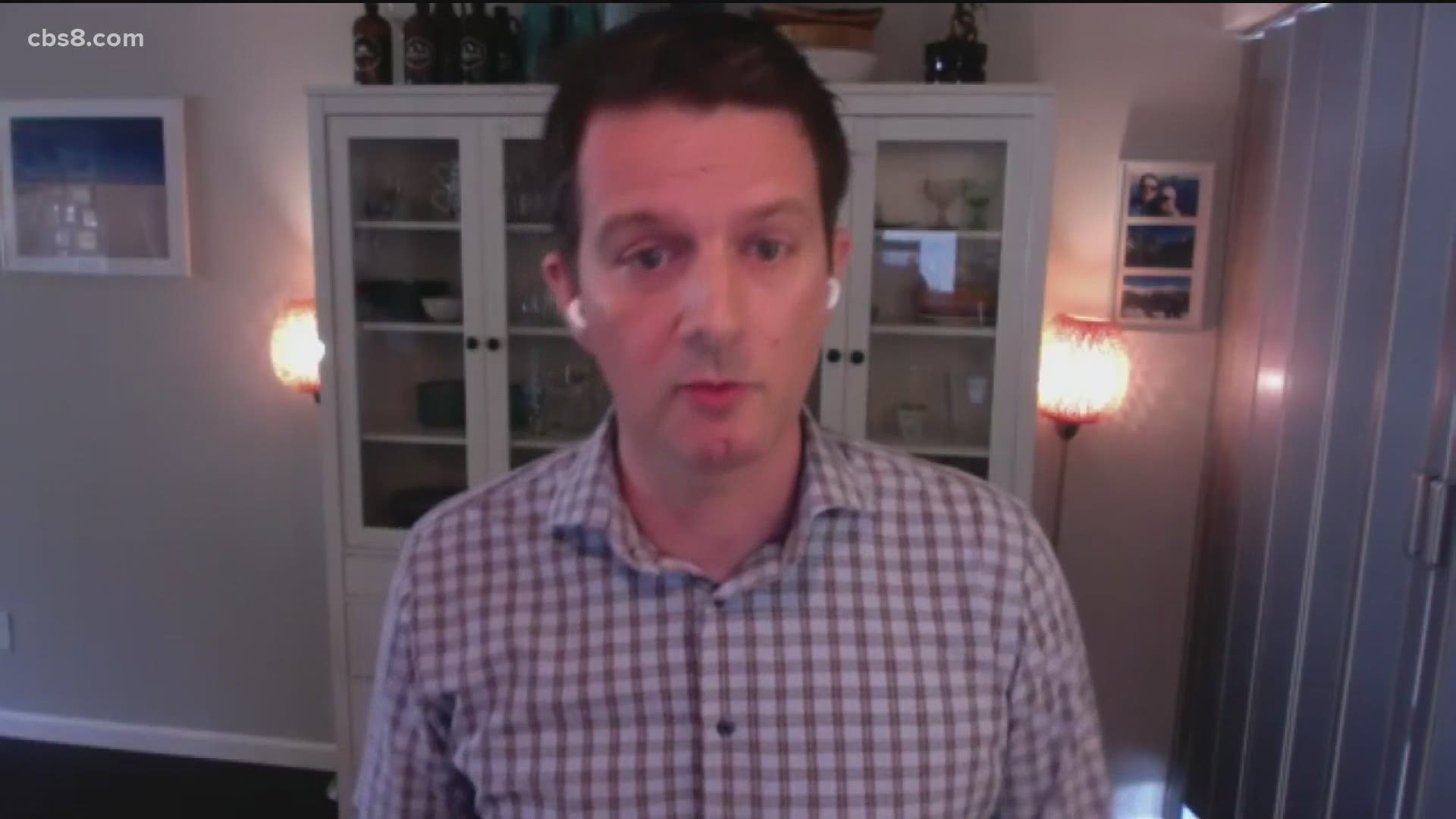SAN DIEGO — As the new school year gets underway online for many San Diego County school districts, News 8 wanted to take a look at the decisions being made when it comes to reopening schools.
News 8 joined a variety of experts for a discussion about kids and COVID-19, all through the lens of science.
In the latest "Learning Curve: Behind the Science", News 8's Shannon Handy spoke with Scripps Infectious Disease Researcher, Kristian Andersen, about why he said schools are not ready to reopen just yet.
Tell me a little bit about the research that you're doing at Scripps as it relates to COVID-19 and kids and crowded areas, such as schools.
“What drives spread, what drives transmission and how does the virus emerge in new places," said Andersen. "Some of the things we have learned is that the real way to focusing our strategy to preventing transmissions is super spreading events so it seems the virus is really capable of spreading. Most people don't necessarily spread the virus, but a few contextual situations where you have these super spreading events individuals manage to infect a lot of other people. Many of those events come about when you have indoor settings with a lot of crowding, a lot of people together. And that's bars, indoor dining. It's working out in the gym inside for example. It's places of worship and things like that.”
Are we ready to start opening schools here in San Diego County?
“We are not ready to open schools at this moment, no," said Andersen. "If you look at some of the best research that has come out of Harvard, they say that if you have more than 25 per 100,000 daily new cases, you should not consider opening schools because it cannot be done safely. In San Diego right now, while we are off the watch list, we are averaging about 85. What we can say is there are many examples of successful school openings all across the world - not in the United States, but across the world. What is really critical here is that all these places have low level community transmission, which we do not have here and the problem is with bad ventilation, the virus spreading via droplets and aerosols not so much via contact. There's a lot of things you can put in place but if you have a high level of community transmission, I just don't see how it can be done."
How long before we can say it's safe to open schools, bars and gyms?
“The primary school in my mind has absolute priority when we're thinking about all these things we could open or could remain closed," said Andersen. "And the problem is we can't just open everything. It unfortunately doesn't work until we have a really low level community transmission. I would expect that in the next two to three weeks or so we're in a situation where I believe schools can definitely reopen and I think it's the next thing we need to focus on and when I'm saying school, I primarily mean primary schools. One of the major concerns I have right now is that universities are opening, and we're starting to see this all across the country. They open, students come in from all across the country, maybe places where there's high levels of community transmission [and] they're now bringing it back to a single campus and we see within a week these universities have to close down again.”
Where does COVID-19 rank in the work you've done with other viruses around the world?
“It can topple our healthcare system because COVID is really dangerous, but nowhere nearly as dangerous as Ebola, but it has the ability to affect many many more people. This is by far the worst virus I have ever seen. Let's focus on crushing that curve so we can reopen schools and ensure they can remain open, which we can achieve. Other countries have managed to do it successfully, so we can achieve it too.”

